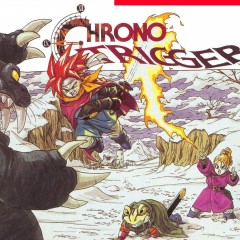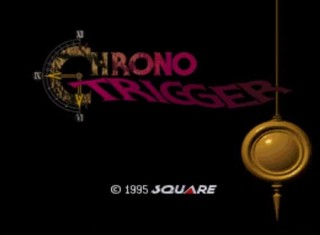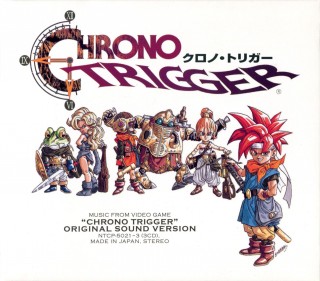
Special Report by Agent Z
Chrono Trigger is one of those classic titles that generate nostalgia and a real sense of reverie amongst gamers. Released back in 1995 for the Super Nintendo Entertainment System – it was a critical and commercial success.
I’m not exaggerating when I say few games released in the past 20 years measure up to this RPG masterpiece. This game has left such an indelible mark on the genre that it was re-released on the Nintendo DS and is available on Android. Some younger gamers or those unfamiliar with gaming might not understand Chrono Trigger’s significance, but that’s okay.
I’m an old nerd whose wanted to write about this for a while.
Leonardo Da Vinci, Michelangelo di Lodovico, Donato di Niccolò, and Raffaello Sanzio da Urbino were the four great artists of the Renaissance. Their work defined their generation and has since inspired countless other artists over the centuries. Now imagine if these masters had collaborated on a single project? How utterly amazing would that have been? In Chrono Trigger we had such a rare assemblage of unrivaled talent.
Hironobu Sakaguchi was the producer and creator of the wildly popular Final Fantasy series. Sakaguchi had just produced the critically acclaimed Final Fantasy VI, which has sold over 3.48 million copies as a stand-alone game to date. He was primarily responsible for the game’s groundbreaking mechanics. Yuji Horii was the director and creator of the famous Dragon Quest series. Horii’s last project at the time, Dragon Quest IV, was a smashing success. It has sold over 1.46 million copies to date. Horii was a huge fan of The Time Tunnel and worked to develop grandfather paradoxes within Chrono Trigger’s story.
Anyone who is even vaguely familiar with manga and anime can tell you just how influential Dragon Ball is for the genre. Over 230 million volumes of the original manga have sold worldwide. Its artist and creator, Akira Toriyama, designed the game’s characters and settings. And then there’s Yasunori Mitsuda. He was the only member of the now famous “Dream Team” who was unknown at the time. Mitsuda is my favorite member and I will touch on why later.
Now please stop and consider the collective talent of these individuals. These guys are the multi-platinum, mega artists of the video game industry. The Dream Team aren’t just giants in the gaming genre. They’re creative geniuses that have inspired countless writers, artists, and gamers for decades. And somehow they decided to come together and make something no one had seen before. They were so dedicated in this pursuit that they traveled to America to research computer graphics and spent a year alone conceptualizing their eventual creation.
Are you beginning to understand?
Video games often sacrifice overall excellence to highlight one or two features. Game play, graphics, or storytelling can differ wildly in quality. This was not the case for Chrono Trigger. The developers went out of their way to make sure every facet of this game surpassed expectation. The interface and menus are intuitive and extremely user friendly. Unlike other RPGs at the time, monster encounters are not entirely random. Players can attempt to evade or engage enemies in the beautifully rendered settings they’re found in.
Chrono Trigger’s story is incredible. Players contend with themes of causality and fate, while immersed in prehistoric, fantasy, and futuristic realms. The characters are memorable. This even includes the silent protagonist, Chrono. Gamers inevitably become emotionally invested in this cast of characters through incredible character design and development. Chrono Trigger was also one of the first games to have its main protagonist die and a primary villain join your party.
And then there’s the score. Remember that guy, Yasunori Mitsuda? He was a sound programmer working for Square Enix at the time. Mitsuda was unhappy with his job and demanded to have the chance to compose music. He was given the opportunity to work on Chrono Trigger and toiled frantically to squeeze every ounce of functionality from the Super Nintendo.
And that’s what people need to understand the most. This was a 16-bit video game being developed on computers we’d find laughably obsolete today. At one point Mitsuda’s hard drive crashed and much of his material was lost. Despite this setback, the stomach ulcers it caused, and the technological limitations – Mitsuda still created a musical masterpiece.
Do you think I’m exaggerating? IGN, Kotaku, and even Forbes list Chrono Trigger’s score as one of the best ever. And this is 20 years of innovation later.
This game is true art in every aspect. You don’t even need to be a gamer to appreciate it. I would read a novel about Chrono Trigger, I would go to a gallery where its art was featured, and I’d happily attend a concert where its music was being played. I have many memorable moments playing this game for the first time with my brother (basically me hogging it for the most part) and replaying it numerous times over the years.
Who doesn’t remember entering a time portal for the first time at the Millennial Fair? Or the clever court room scene where Chrono gets put on trial? How about racing Johnny through the post apocalyptic ruins?
One of my personal favorites was battling through the hordes of enemies in the underwater palace of Zeal while the intense soundtrack played on. The game is chalk filled with innovation and intensity.
Chrono Trigger was a small miracle. I’m hard pressed to think of a comparative collaboration that was equally successful in my time. Toriyama, Horii, Sakaguchi, and Mitsuda deserve the continued recognition they get for such a nostalgia worthy creation.
And that’s the allure of nostalgia, isn’t it? That no matter how disappointing life can get, there will always be some things we can look back on fondly. For me it’s the familiar ticking of a grandfather clock giving way to a thunderous opening theme.
Agent Z is stationed in Northeastern Pennsylvania. He is an avid writer and poet. You can follow him on twitter @ZapataWordsmith and read his writing at JasonZapata.com.


